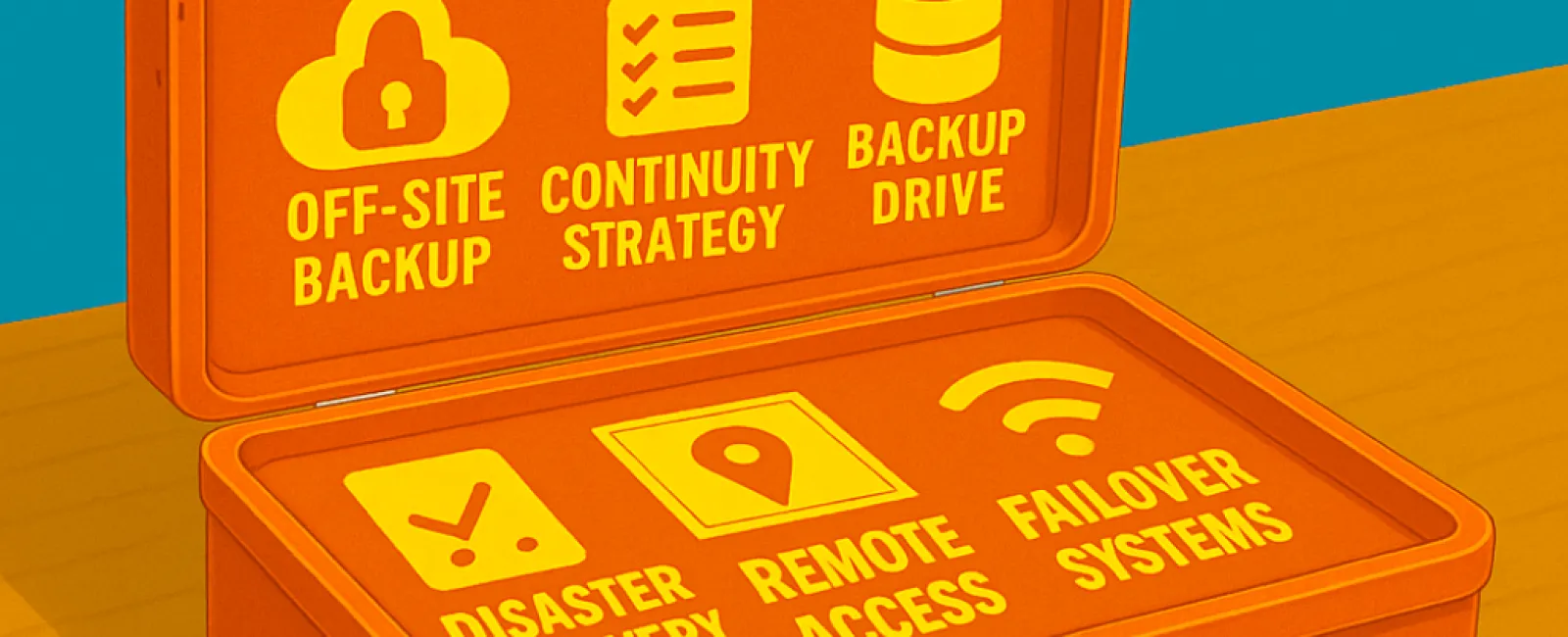July 28, 2025
Unexpected power failures, cyberattacks, hardware malfunctions, and natural catastrophes often strike without notice, severely impacting small businesses. While many believe that simply having backups is sufficient, the reality is that restoring files alone doesn't guarantee uninterrupted operations. If your systems become inaccessible, remote work isn't supported, or communication with your team and clients breaks down, even a brief interruption can lead to lasting damage. A dependable IT partner goes beyond backups, offering a comprehensive strategy to keep your business fully functional under any circumstances.
Backups Are Just the Beginning – Embrace Business Continuity
Backups are undeniably important, but they represent only one piece of the puzzle. What truly safeguards your business is a robust continuity plan — a forward-thinking approach designed to maintain your operations during and after disruptions.
When systems fail, data becomes unreachable, or your physical location is compromised, relying solely on backup files stored locally offers little relief. Without a swift and clear recovery plan, your business faces significant risks including lost revenue, damaged reputation, and regulatory non-compliance.
Understanding the Crucial Difference Between Backups and Business Continuity
Many businesses mistakenly assume backups are enough:
●
Backups restore your data.
●
Business Continuity ensures your operations keep running no matter the challenge.
An effective continuity plan addresses critical questions such as:
●
How quickly can we resume full operations?
●
Where will our team work if the office is inaccessible?
●
Which systems are essential for business survival?
●
Who is responsible for initiating the recovery process?
Key elements of a comprehensive plan include:
●
Encrypted, off-site, and tamper-proof backups
●
Clearly defined recovery objectives (RTO/RPO)
●
Preparedness for remote work scenarios
●
Redundant infrastructure and automatic failover systems
●
Routine disaster simulation drills
If your IT provider can’t confidently guide you through these essentials, you’re not truly protected—you’re just fortunate so far.
Could This Happen to You?
This isn’t a scare tactic; these are real-life events with significant consequences. Recent incidents include:
●
Florida hurricanes forced hundreds of businesses to halt operations, leaving those without cloud access completely immobilized.
●
North Carolina floods wiped out on-site servers, erasing months of critical data.
●
California wildfires destroyed entire office buildings, many lacking off-site recovery plans.
●
Numerous small businesses hit by ransomware attacks discovered their backups were either corrupted or untested.
Disasters don’t discriminate; they impact businesses of all sizes, including yours.
Essential Questions to Ask Right Now
If disaster struck tomorrow, would your business keep running?
Pose these questions to your IT provider:
●
In the event of a ransomware attack, how quickly can we recover?
●
Are backups regularly tested, and which systems do they cover?
●
What is the contingency plan if a flood or fire renders our office unusable?
●
Does our continuity plan comply with industry standards and regulations?
●
Can we maintain client services if our team must work remotely?
If you lack full confidence in these answers, your business may already be vulnerable.
Disasters Are Inevitable, Downtime Is Optional.
While you can’t prevent every outage, storm, or cyberattack, you can control how your business responds.
A reliable IT provider helps you bounce back.
An exceptional one ensures your business never misses a beat.
Curious about your current preparedness?
Click Here or call us at 714-579-3026 to schedule your FREE 15-Minute Discovery Call, and let’s guarantee that no disaster ever causes downtime.





